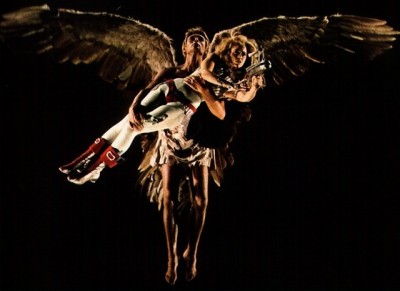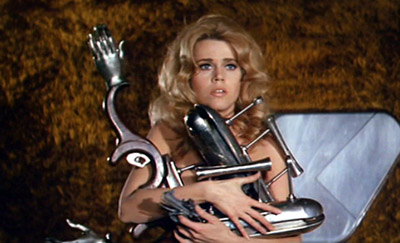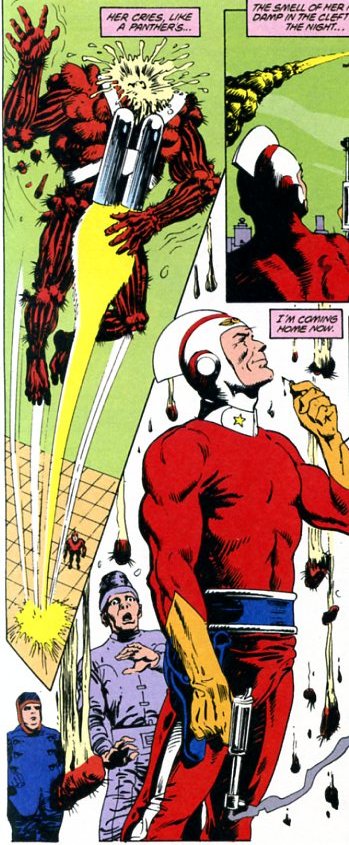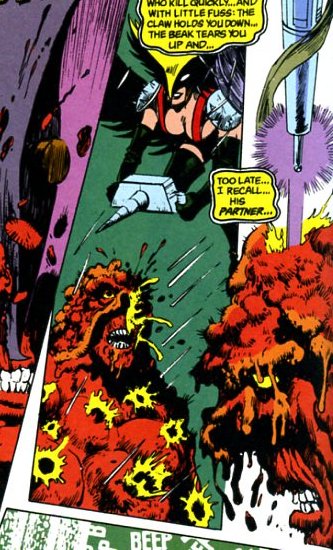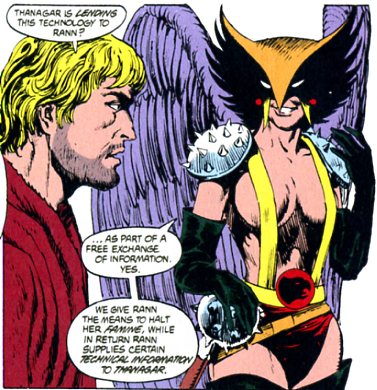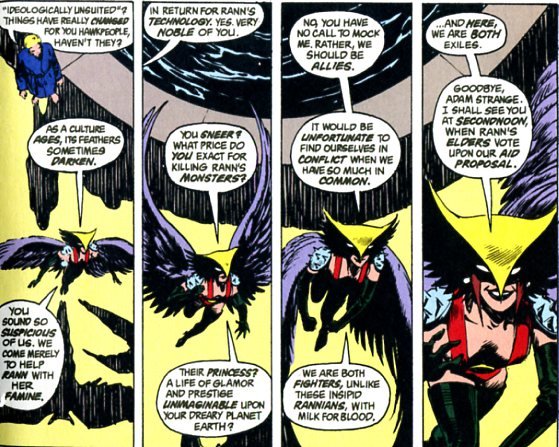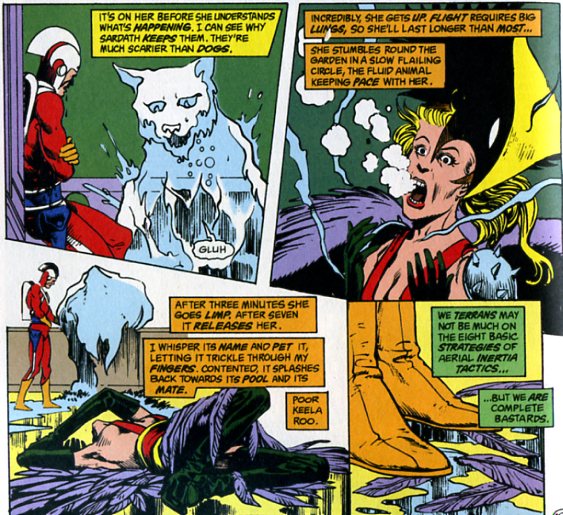Me, Mo and Alison
The Bechdel Test. A thought exercise that consists of a series of three criteria applied to media.
Does the media have:
1) More than one woman
Do they:
2) talk to each other
3) about something other than a man
It’s pretty well-documented that Hollywood movies fail miserably at even these three very basic criteria.
However, (and possibly surprisingly,) a great deal of Japanese manga does *not* fail the Bechdel Test. A shockingly large amount of manga, both by and for women and by and for men, fulfills and surpasses these criteria. And it dawned on me that this would make a great topic here at Hooded Utilitarian. So, I threw it out on Twitter that I would be writing about manga series that met the criteria and what suggestions did people have?
Almost immediately, my Twitter feed filled up with…really, bad suggestions. Stories of magical elementary school girls, stories of gender-bent political bedroom politics, stories in which the hyper-competent, super cool, yet totally sexy lead female was, with the exception of a few “bad girls,” the only female in the series. (To be fair, I received good suggestions, too, but the bad ones were more interesting in a lot of ways.)
I found myself having to explain the concept of the Bechdel test over and over. I was accused of adding criteria when I explained that it really had to be something that someone like myself might read.
And, ultimately, someone I respect greatly suggested two truly excellent series (by which I mean that I consider them both well-written,well-drawn by masters of the craft; that I loved one and anticipate very much liking the other when I read it) that, in my opinion utterly failed to meet the spirit of the test. Why? Because *I am Mo.* I am an adult woman with an preference for stories about adult women which are not exclusively focused on their relationship with men. (Or women. I discounted almost all ot the Yuri I read, because the conversations are focused on romantic relationships with women.) There were some heated words on the topic on Twitter. And eventually, I decided to ask the source – Alison Bechdel herself.
Here was the meat of my email:
I have a question that really, only you can answer. I write about Japanese comics and I’d like to do a post that highlights some titles that pass the “Bechdel Test.” Japanese comics do this better than any other media I’ve ever seen. There are many female leads, many non-guy conversations between women. Even in romances. In conversation with other folks about this, two suggestions were made that I turned down. I have been challenged about them, but I believe that while they both meet the criteria literally, they fail at meeting the spirit of the test. And so, I’m asking you what you think.
The first is Emma (http://en.wikipedia.org/wiki/Emma_(manga)) – a story about a Victorian maid who falls in love (mutually) with a man from the upper classes. It’s a pretty realistic story. The women certainly do talk about things other than guys, because the main character is a servant and she has a lot to do, and tradesmen and other servants to deal with. There are other women – her mistresses, for instance. She discusses her love interest with almost none of them. However, the story is ostensibly a love story and while the conversation is not about guys, would Mo sit through that?
The second is Ooku, (http://en.wikipedia.org/wiki/Ooku) which is a story about Japan’s Edo period, in which many of the men have died and women take on men’s roles to keep the country going. The gender roles are flipped – the Shogun’s harem is now all men – but the women still maintain the facade of it being male rule.Both of these series are written by women.I know this is asking a lot, but I would really appreciate a note letting me know whether you think these pass or fail the Bechdel Test. I greatly appreciate your time.
Here is Alison’s answer:
I think I’m with you. I like your distinction between the letter and the spirit of the rule. Although whether Mo would sit through these stories is not, technically, a criterion of the test, I think she would not. Sit through them, I mean.
***
So, the question for me became not “what manga passes the Bechdel Test?” but “why is it so hard for people to understand what might pass the Bechdel Test?” Arrogant as this sounds, I have no problem at all coming up with titles that meet both the letter and the spirit of the test.
Is it that readers have *such* low expectations of female characters that them merely existing is enough? Is there some inherent difficulty in identifying a series that includes women in non-relationship conversations? Or are are female high school students in hopeless romances with the wrong guy, or sexy women wielding guns the only things being translated into English? It’s true that many of the popular action series for the younger crowd have the traditional one girl who is the potential love interest one day, when they all grow up and the lead male character isn’t focused on winning so much. But One Piece, a series that is arguably the most popular manga in the world right now (and is *still* under appreciated by most critics,) is targeted to that same age group, and passes the Test with flying colors.
Writer/reviewer Sean Gaffney says, “The Bechdel Test makes sure your characters aren’t dull. Who wants to hear women just talking about the same thing? It leads to well-rounded characters and better stories, and makes you THINK more. It also makes you want to step up your men.”
Melinda Beasi talked at length in her article here on HU about the way that women distance themselves from “girly” things, but it’s clear from the revenue generated by the Twilight franchise, that the fantasy of being the princess who needs rescuing and wants to be possessed by a man who is compelled by animal need, runs deep in many girls and women. I see much the same kind of thing in the Yuri/lesbian lit world, the only difference being that the “Prince” is female.
The default in western entertainment is that the female is the love interest, there for the man so, in the absence of the man, audiences will naturally assume the female has to be his replacement – that is, she must be the Hero (e.g., Salt, Aeon Flux, La Femme Nikita). Where there are multiple women, they will often either be a team of replacement men, doing “manly” things (Set it Off, Resident Evil) or not doing anything and talking about the men they need to do those things (Waiting to Exhale ). Of these, only Waiting to Exhale does not pass the Test. The others have women in heroic roles…and therefore pass.
There are many manga that pass the Bechdel Test. Next month, I will review one of those that are available in English- a series that I think best exemplifies what the Bechdel Test stands for.
The Bechdel Test is a starting point, not a place to end. It’s a thought exercise the point of which, I have been reminded, is to make one think.
If I were to posit that women are still socialized to be needy, or that female fantasies of being swept off their feet are precisely because so many women are the ones to shoulder more responsibility to keep everything together in difficult times, I’m sure I’d be challenged to “prove” it, or chatised for either buying into it, or being sarcastic about it (or all three at once. ^_^)
So, I’ll ask you, the incredibly intelligent readers of Hooded Utilitarian – why do you think it’s so *hard* to conceive of entertainment in which a woman has a conversation with another woman, about something other than a man?


